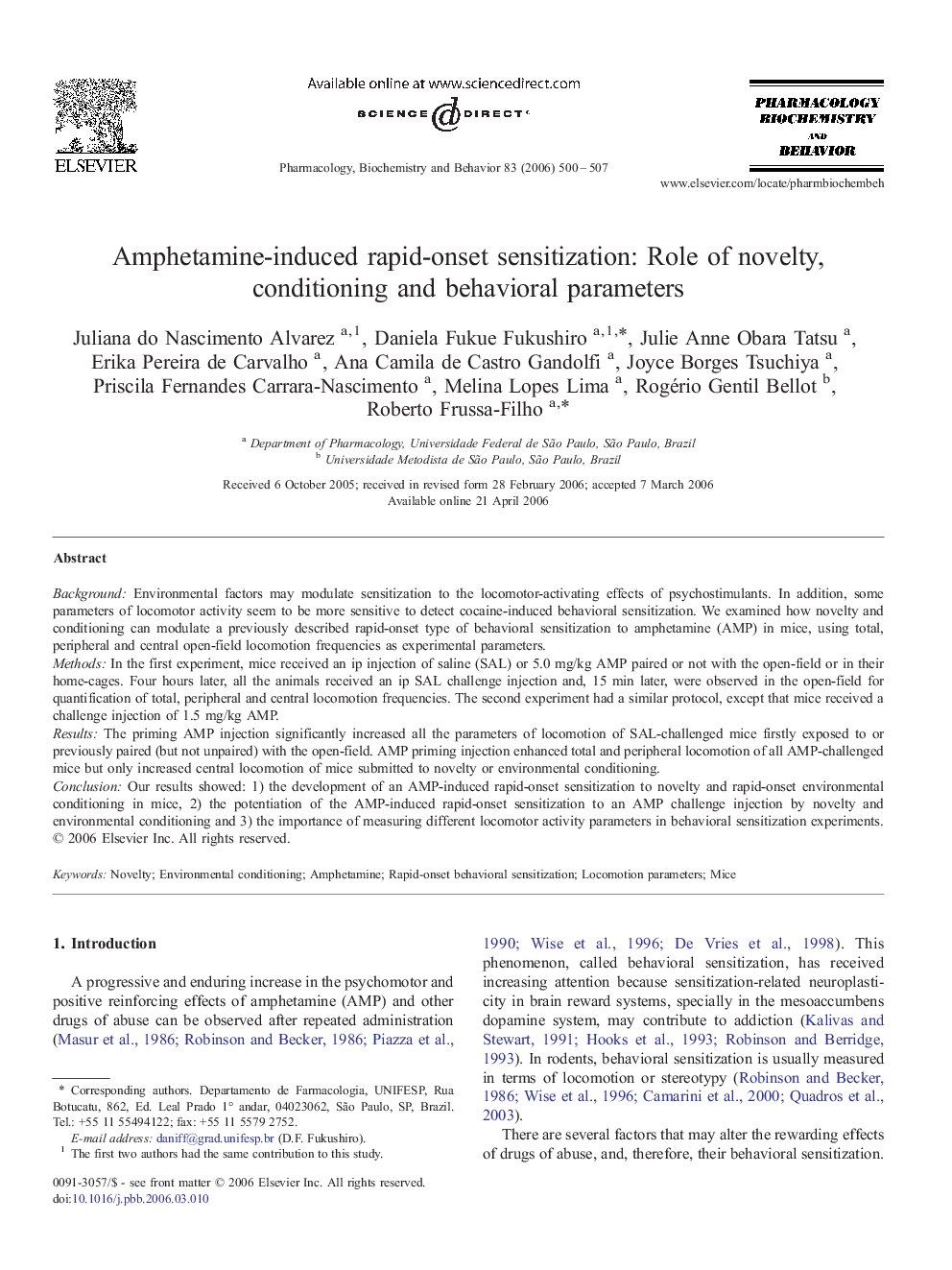| Article ID | Journal | Published Year | Pages | File Type |
|---|---|---|---|---|
| 2014543 | Pharmacology Biochemistry and Behavior | 2006 | 8 Pages |
BackgroundEnvironmental factors may modulate sensitization to the locomotor-activating effects of psychostimulants. In addition, some parameters of locomotor activity seem to be more sensitive to detect cocaine-induced behavioral sensitization. We examined how novelty and conditioning can modulate a previously described rapid-onset type of behavioral sensitization to amphetamine (AMP) in mice, using total, peripheral and central open-field locomotion frequencies as experimental parameters.MethodsIn the first experiment, mice received an ip injection of saline (SAL) or 5.0 mg/kg AMP paired or not with the open-field or in their home-cages. Four hours later, all the animals received an ip SAL challenge injection and, 15 min later, were observed in the open-field for quantification of total, peripheral and central locomotion frequencies. The second experiment had a similar protocol, except that mice received a challenge injection of 1.5 mg/kg AMP.ResultsThe priming AMP injection significantly increased all the parameters of locomotion of SAL-challenged mice firstly exposed to or previously paired (but not unpaired) with the open-field. AMP priming injection enhanced total and peripheral locomotion of all AMP-challenged mice but only increased central locomotion of mice submitted to novelty or environmental conditioning.ConclusionOur results showed: 1) the development of an AMP-induced rapid-onset sensitization to novelty and rapid-onset environmental conditioning in mice, 2) the potentiation of the AMP-induced rapid-onset sensitization to an AMP challenge injection by novelty and environmental conditioning and 3) the importance of measuring different locomotor activity parameters in behavioral sensitization experiments.
